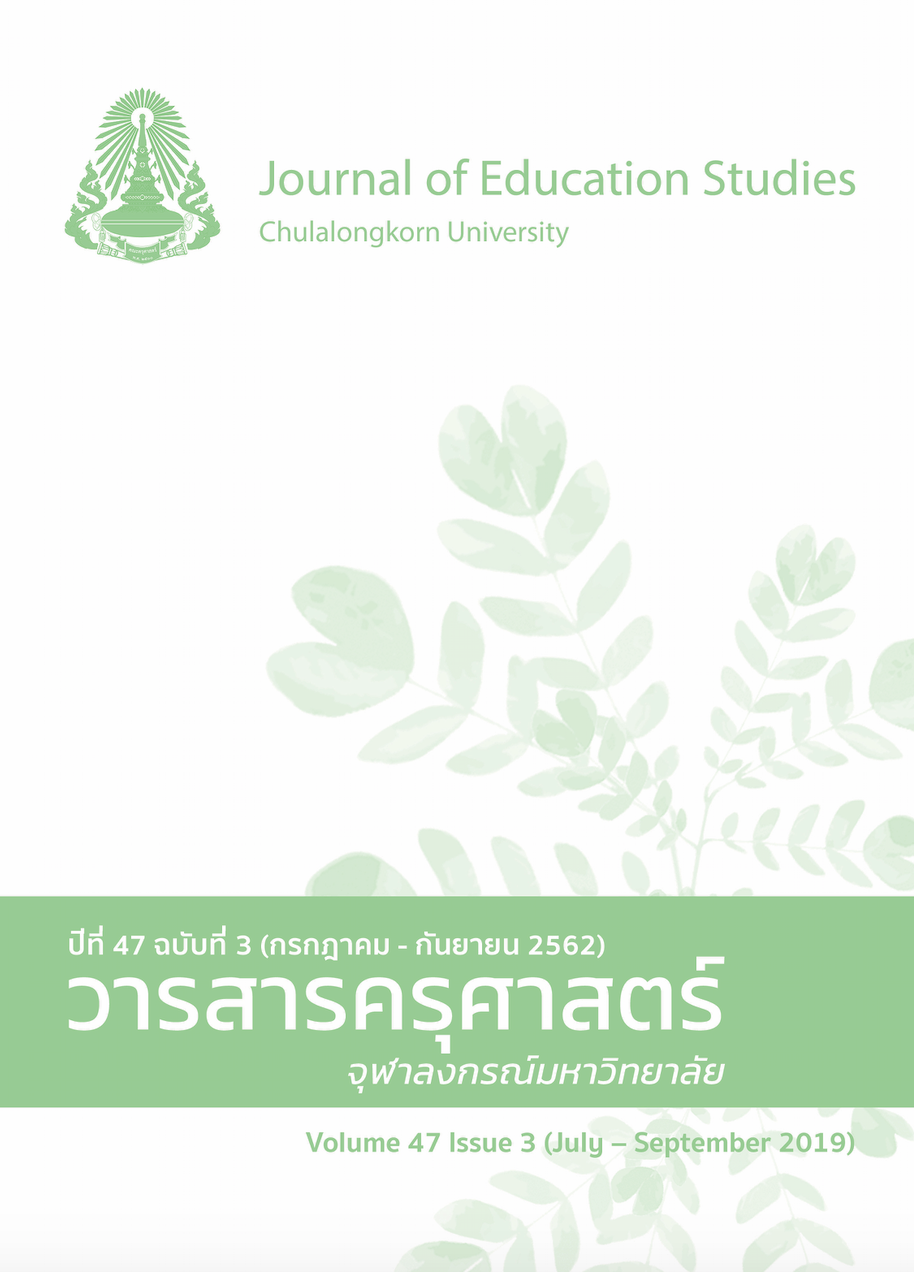The Training Model to Enhance the Public Consciousness of In-Service Military Conscripts
Keywords:
TRAINING MODEL, PUBLIC CONSCIOUSNESS, IN-SERVICE MILITARY CONSCRIPTSAbstract
Public Consciousness is a crucial characteristic for an individual to demonstrate their responsibility to the community. Military conscripts are an important person in the Army. This study is aimed at developing a training model to enhance public consciousness of the in-service military conscripts by using adult learning and service learning. Total of 30 participants in the study were in-service military conscripts of 2nd Infantry Battalion 4th Infantry Regiment who remain their positions in the military not exceeding 6 months at the time of study. Results suggested that the training model to enhance public consciousness of in-service military conscripts was inclusive of 7 steps. 1) The preparation of in-service military conscripts 2) Provide in-service military conscripts with skills in community collaboration 3) Establish learning objectives 4) Prepare in-service military conscripts with the skills prior to the practice 5) Practical experience 6) Cognitive reflection and 7) Evaluation. Moreover, the result suggested that in-service military conscripts have increased their public consciousness after completing the training model to enhance public consciousness (26.6%). By in-service military conscripts developing their public consciousness characteristics, they will become a sustainable community service provider, a service which benefits the entire nation.
References
ภาษาไทย
เกียรติศักดิ์ แสงอรุณ. (2551). แนวทางการพัฒนาจิตสำนึกสาธารณะสำหรับเยาวชนไทย กรณีศึกษากลุ่มและเครือข่ายเยาวชนที่ทำงานด้านจิตสำนึกสาธารณะ (วิทยานิพนธ์ปริญญามหาบัณฑิต ไม่ได้ตีพิมพ์). จุฬาลงกรณ์มหาวิทยาลัย, กรุงเทพฯ.
จุรี ทัพวงษ์ (2552). การประยุกต์ใช้เทคนิคการเรียนรู้ด้วยการบริการสังคมในการจัดการศึกษาระดับอาชีวศึกษา. วารสารการศึกษาและพัฒนาสังคม, 5(1-2), 67-80.
จินตนา สุจจานันท์. (2554). การศึกษาตลอดชีวิตและการพัฒนาชุมชน. กรุงเทพฯ: โอ.เอส.พริ้นติ้ง เฮ้าส์.
ปรีชา แคล้วปลอดทุกข์. (2535). การปรับปรุงทหารกองประจำการให้เพิ่มบทบาทในการพัฒนาประเทศ. เอกสารวิจัยส่วนบุคคล. กรุงเทพฯ: หลักสูตรการป้องกันราชอาณาจักร.
สมพงษ์ สิงหะพล (2542). เทคนิคการสอนของการเรียนแบบร่วมมือ. วารสารสีมาจารย์. 13(25), 41-44.
อาชัญญา รัตนอุบล (2542). เงื่อนไขการเรียนรู้ของผู้ใหญ่และแนวทางการสอนผู้ใหญ่ [เอกสารอัดสําเนา].กรุงเทพฯ: ภาควิชาการศึกษานอกโรงเรียน คณะครุศาสตร์ จุฬาลงกรณ์มหาวิทยาลัย.
อาชัญญา รัตนอุบล (2551). พัฒนาการการเรียนรู้ และการจัดกิจกรรมสำหรับผู้ใหญ่. กรุงเทพฯ: ภาควิชานโยบาย การจัดการ และความเป็นผู้นำทางการศึกษา คณะครุศาสตร์ จุฬาลงกรณ์มหาวิทยาลัย.
ภาษาอังกฤษ
Alt, M. N. & Medrich, E. A. (1994). Student outcomes from participation in community service paper prepared for the U.S. department of education, office of research. Retrieved from: https://www.csf.colorado.edu
Belisle, K. & Sullivan, E. (2007). Service learning lesson plans and projects. Amnestry International and Human Rights Education Associates.
Brookfield, S. D. (1986). Understanding and facilitating adult learning. San Francisco, CA: Jossety-Bass.
Erickson, J. A., & Jeffrey B. A. (1997). Learning with the community: concept and models for service-learning in teacher education. AAHE’s series on service-learning in the disciplines. Washington D.C.: American Association of College for Teacher Education.
Knowles, M. S. (1980), The modern practice of adult education: From pedagogy to Andragogy (Revised Edition). Englewood Cliffs: Prentice Hall/Cambridge.
Vygotsky, L.S. (1978). Mind in society: The development of higher psychological processes. Cambridge, MA: Harvard University Press.




